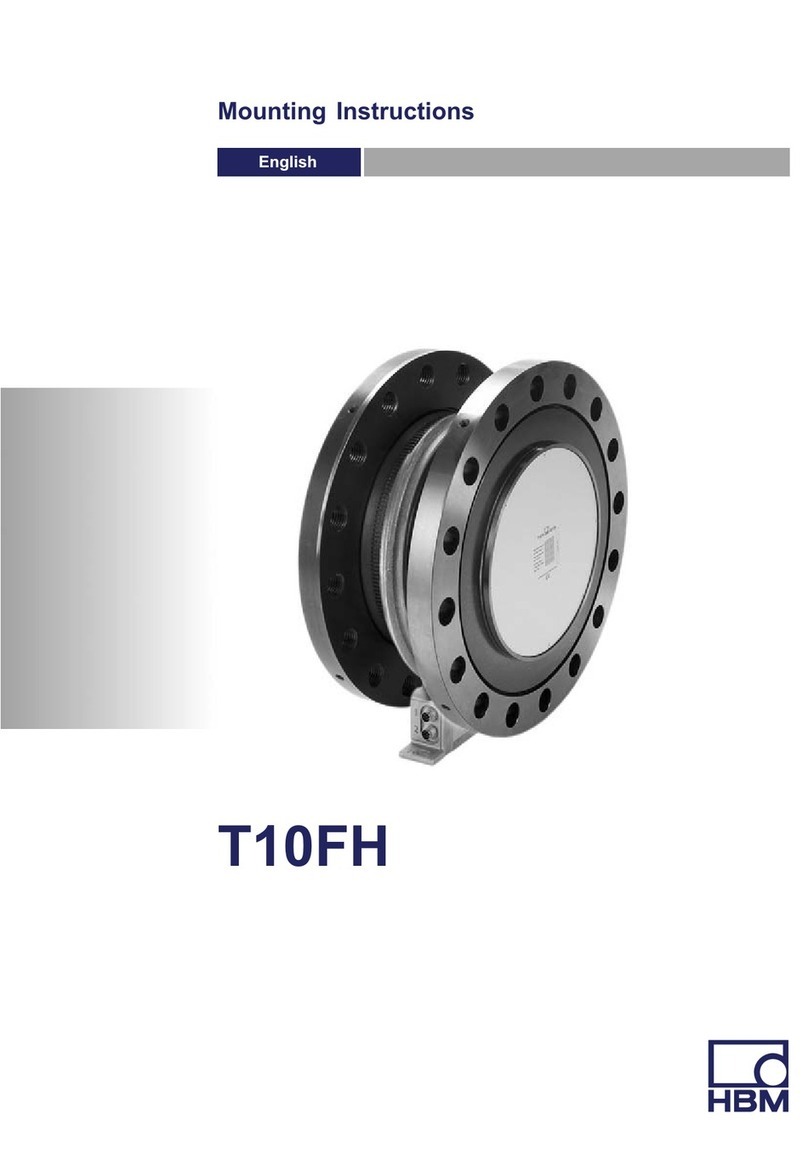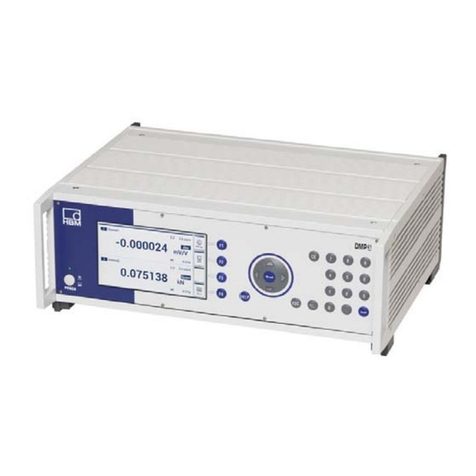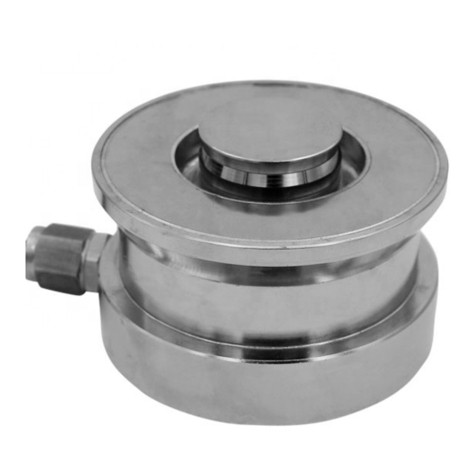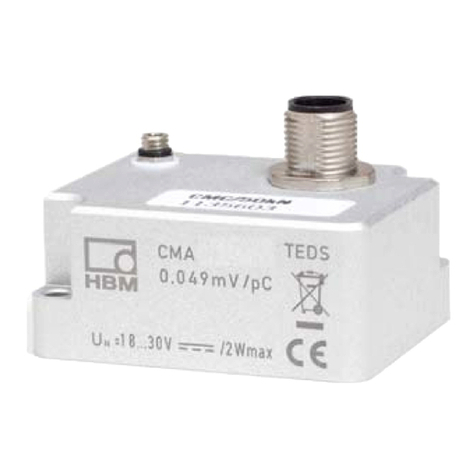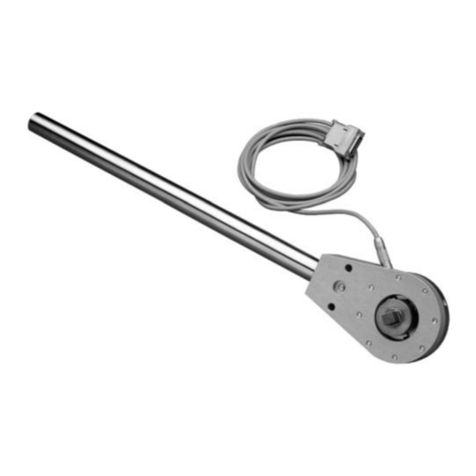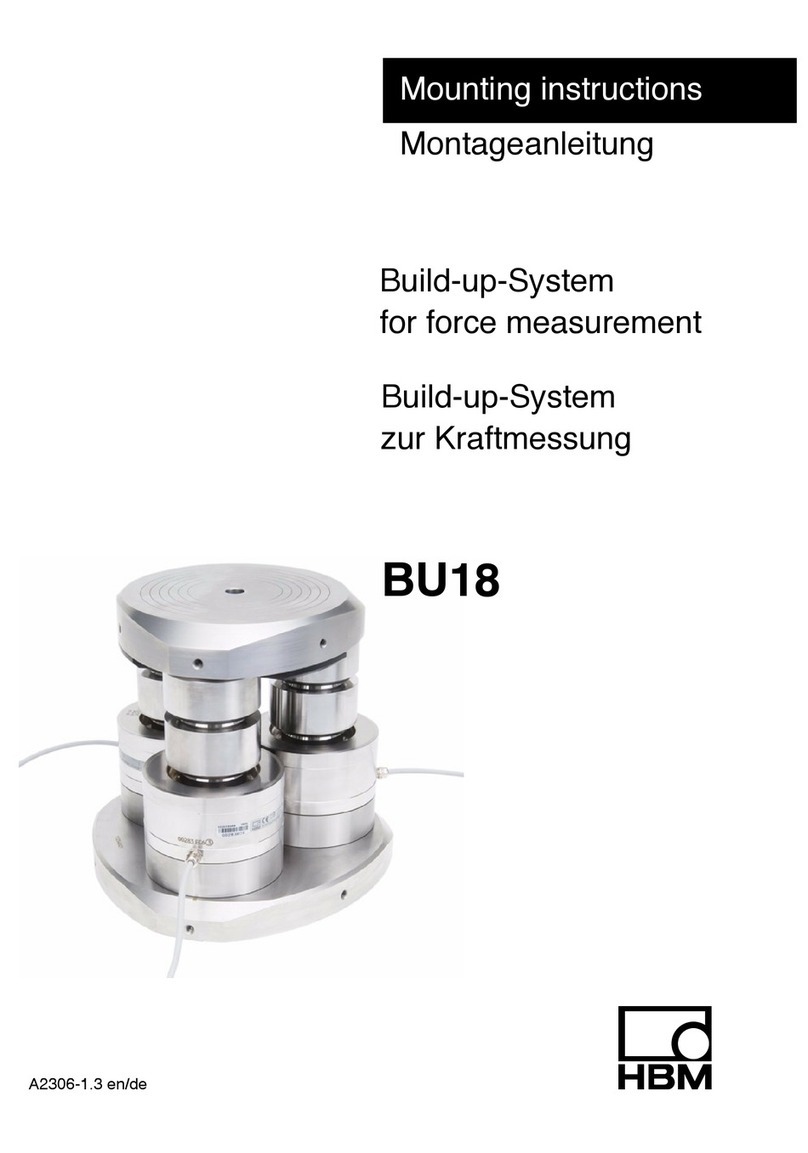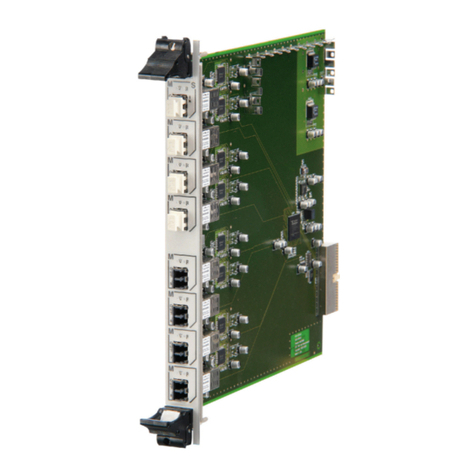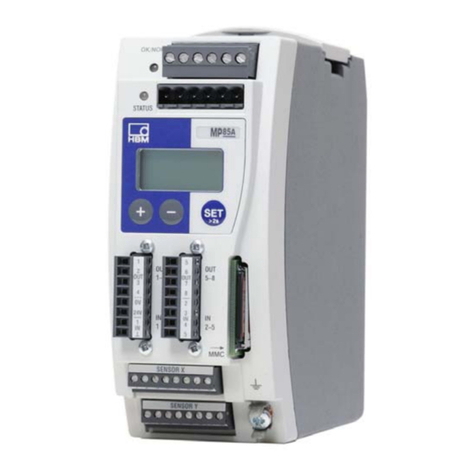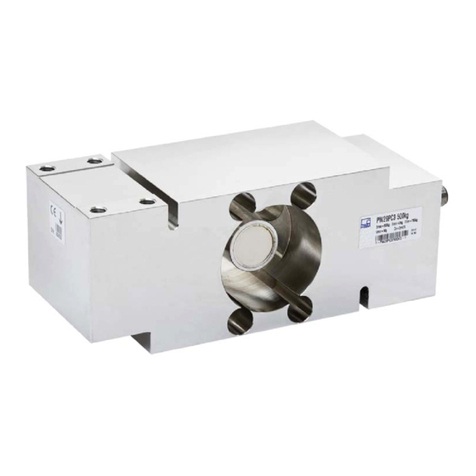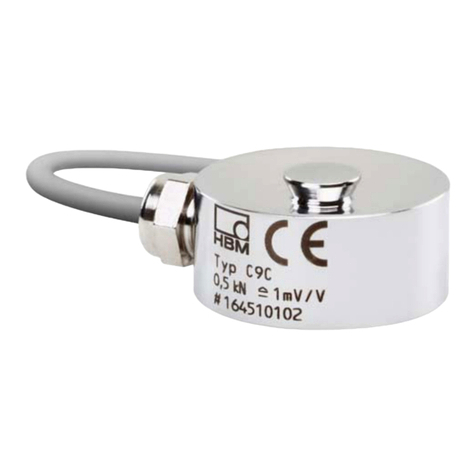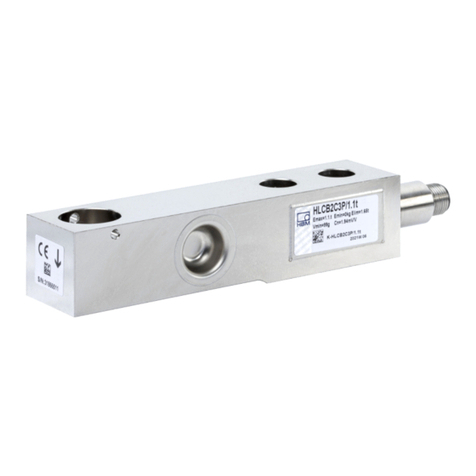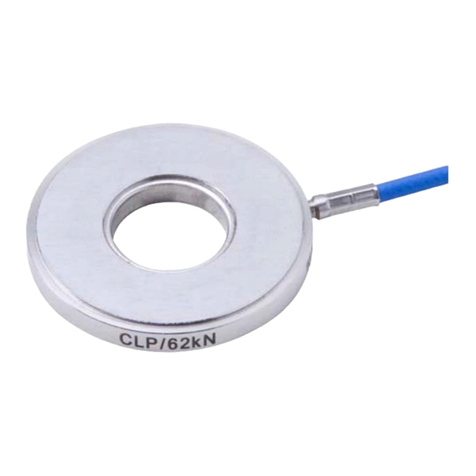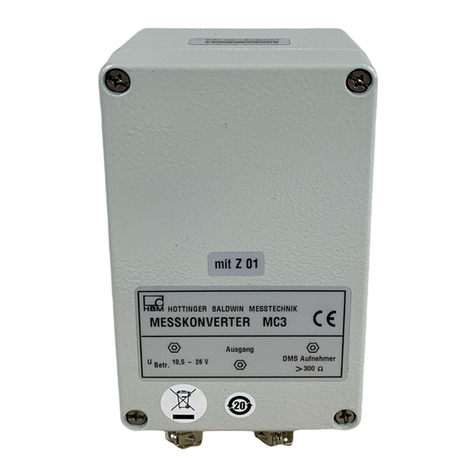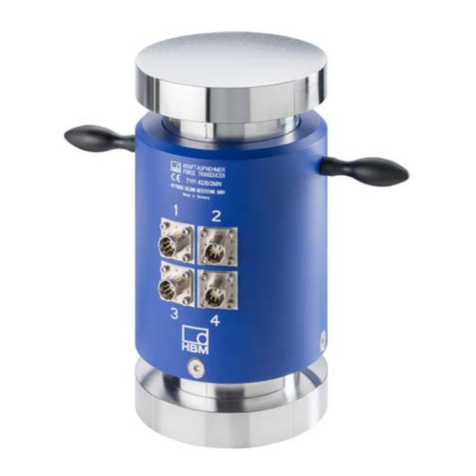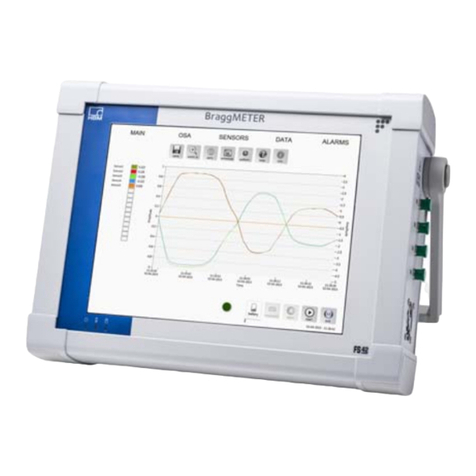
Mounting
8A00546_11_YI0_01 HBM: public WA…
3 Mounting
All versions
The transducers can be clamped at the enclosure tube. But the best mounting
position is in the center of the transducer. The mounting blocks shown on page
28 can be obtained from HBM for a diameter of 12 mm.
The transducer axis must point in exactly the same direction as the displace
ment, moving components or change in length to be measured. They can
occupy any position in the space. It can be an advantage to only finally clamp
the transducer in conjunction with adjusting the zero position and the zero bal
ance.
Probe version Standard and High temperature
Transducers also have a cylindrical shaft diameter corresponding to fit 8h6 of
the standard for comparators, which allows them to be held in all clamping
devices and measuring systems designed for comparators. If under rough con
ditions, there are significant contamination and deposits on the probe pin, then
this must be cleaned at regular intervals with a lint-free cloth and, if necessary,
gently wetted with a low-viscosity, thermally stable oil. Make sure that the sur
face of the probe pin is intact.
The probe pins of the displacement transducer are conditionally corrosion-
proof. The transducers have been designed for industrial applications.
In humid environments, the probe versions require cleaning and oiling at regu
lar intervals. If there is surface rust, the probe pin can be cleaned using steel
wool or fine emery cloth and subsequently greased.
Using the transducers in humid and at the same time cold environments is not
recommended. Frosting and icing can influence the measuring system and
lead to errors. If these conditions occur the transducers have to be cleaned
constantly or actions to prevent the conditions have to be taken.
Probe version Low temperature
Transducers also have a cylindrical shaft diameter corresponding to fit 8h6 of
the standard for comparators, which allows them to be held in all clamping
devices and measuring systems designed for comparators. If under rough con
ditions, there are significant contamination and deposits on the probe pin, then












